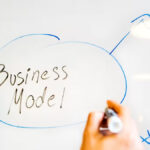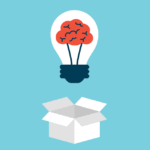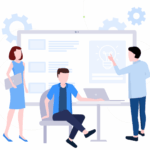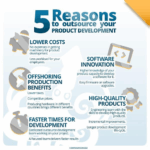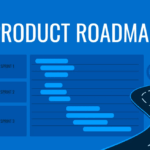Ever wondered why some products wow us, while others flop right out of the gate? That magic often comes down to two things: product development and product design. Many people mix these up or think they’re interchangeable. But they are as different as chalk and cheese. In this blog, we’ll unpack their meanings, key differences, and why they must work together. We’ll also share real-world examples, best practices, and future trends. Buckle up — we’re diving deep into product development vs product design!
What Is Product Development?
Product development is the process of turning an idea into a real product. It covers everything from idea generation to marketing and after-sales evaluation. According to Statista, global R&D spending hit $2.47 trillion in 2023. This shows companies aren’t leaving success to chance.
Stages of product development:
- Idea generation and brainstorming
- Feasibility studies and research
- Design and prototyping
- Engineering and production
- Testing and validation
- Launch and marketing
- Post-launch improvements
Key players in product development:
- Product managers
- Engineers
- Marketing teams
- Sales teams
- Designers
Think of product development as the orchestra conductor — it pulls all parts together.
Without this, even a great product idea can fall flat. It’s about staying on track and meeting market needs.
What Is Product Design?
Product design is the process of creating how a product looks and works. It focuses on appearance, functionality, and user experience (UX). In short, it makes products user-friendly and appealing to the eye. According to Adobe, companies focusing on design outperform competitors by 219% on the S&P Index.
Types of product design:
- Industrial design (physical products)
- UX/UI design (digital products)
- Service design (non-physical services)
Stages of product design:
- User research and discovery
- Ideation and sketching
- Wireframing and prototyping
- Testing and feedback
- Final refinement
Key players in product design:
- UX researchers
- Visual designers
- Usability testers
- Industrial designers
Product design is where creativity meets practicality. A beautiful product that’s hard to use is a recipe for disaster. Great design builds loyalty and keeps customers coming back for more.
Product Development vs Product Design:
Let’s break it down so it’s as clear as day.
Focus:
- Development = entire product journey
- Design = product’s form, feel, and user experience
Responsibilities:
- Development manages timelines, costs, and coordination
- Design ensures the product delights and serves its purpose
Processes:
- Development juggles many teams and resources
- Design relies on user research and creative iteration
Skills:
- Development needs technical, business, and market knowledge
- Design requires creativity, empathy, and communication
Tools:
- Development: JIRA, Asana, Trello
- Design: Figma, Adobe XD, Sketch
McKinsey reports that companies excelling in design increase revenue by 32% more than competitors. That’s proof in the pudding — design and development aren’t “nice-to-haves.” They’re must-haves in today’s fast-paced market.
How Development and Design Work Hand in Hand
Product development and product design go together like peanut butter and jelly. They rely on each other to create products people love. The process usually flows like this:
- Designers create concepts
- Developers check feasibility and cost
- Teams test prototypes together
- Feedback loops improve the product
When they work well together, magic happens. But when they clash, projects often run over budget or miss deadlines.
Common challenges:
- Misaligned goals
- Poor communication
- Design limitations in manufacturing
According to InVision, 70% of companies believe better collaboration improves product success. Strong teamwork makes the dream work. Companies like Apple and Tesla show how aligned design and development deliver breakthroughs.
Examples That Turned Heads
Apple iPhone: Apple balances stunning design with cutting-edge development. The result? Over 2.2 billion iPhones have been sold worldwide.
Airbnb: Airbnb focused on UX design and scalable backend systems. Today, it operates in over 220 countries.
Tesla: Tesla’s sleek design and advanced engineering disrupt the automotive industry. In 2024, it delivered nearly 2 million cars.
These brands show that when you hit the nail on the head, you transform industries. Without smart product development and thoughtful design, they wouldn’t be global leaders today.
How to Align Product Development and Product Design
Here’s how to make sure your teams sing from the same hymn sheet:
- Start with user research Understand what users want and need.
- Foster cross-functional teamwork Bring designers and developers together from the start.
- Work in iterations Use agile or lean methods to stay flexible.
- Create feedback loops Test early, adjust often.
- Set clear goals and timelines Avoid drifting off course or missing deadlines.
- Invest in prototyping and testing Don’t cut corners — it saves time later.
Research by Pendo shows that companies prioritizing user feedback improve retention by 33%.
Common Challenges and How to Beat Them
Every rose has its thorn. Here are the pitfalls and how to avoid them:
- Misaligned priorities: Hold regular meetings to keep teams on the same page.
- Budget constraints: Prioritize must-haves over nice-to-haves.
- Communication gaps: Use shared tools and clear documentation.
- Rapid market shifts: Stay flexible and be ready to pivot.
According to ProductPlan, 55% of product teams say alignment is their biggest challenge. The writing’s on the wall: invest in alignment or risk failure.
Future Trends Shaping Product Development and Design
The future is knocking on the door. Here’s what’s changing the game:
- AI in design tools: AI speeds up design and predicts user preferences.
- Sustainability focus: Consumers demand eco-friendly and ethical products.
- Customer co-creation: Brands involve customers in the development process.
- No-code platforms: More teams build products without coding.
- Personalization and data use: Products increasingly adapt to user behavior.
For businesses, it’s time to strike while the iron is hot. Stay ahead, or risk falling behind competitors.
The Best of Both Worlds
In the battle of product development vs product design, there’s no clear winner. Both are essential, like two wheels on a bike. Development brings products to life. Design makes them usable and lovable. Want to build better products? Invest in both, and foster a collaborative culture. To learn how expert teams align development and design, check out BrandNewMD, the best sourcing company. They help businesses get their ducks in a row — from idea to execution.
FAQ
Can a designer handle development?
Sometimes, but it’s rare — they need technical skills too.
Can a developer handle design?
Unlikely. Developers focus on function, while designers focus on form.
Do small teams need both?
Yes, even startups benefit from both skill sets.





